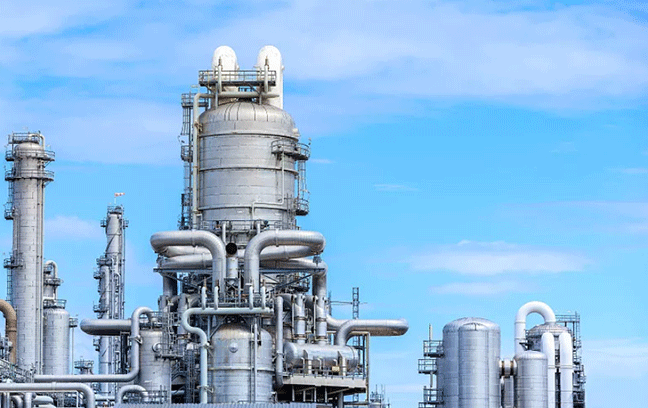0086-18861028088

Tapioca starch is an important ingredient in many food products and is widely produced in Southeast Asian countries. Centrifuges are a crucial component in the tapioca starch production process, and their applications play a critical role in the economy of many rural communities. Therefore, we will explore the various applications of centrifuges in tapioca starch production in Southeast Asian countries, highlighting their importance and benefits.
The first application of centrifuges in tapioca starch production is the separation of tapioca starch milk from cassava mash. The process involves passing the cassava mash through a series of centrifuges, which separate the tapioca starch milk from the fibrous components of the cassava. Using centrifuges for this application has many advantages. It can increased efficiency in separating tapioca starch milk from cassava mash. Traditional separation methods for obtaining tapioca starch milk from cassava mash, such as sedimentation and filtration, can be time-consuming and require a lot of manual labor. Centrifuges, on the other hand, can complete the separation process in a matter of minutes, and with minimal human intervention.
Besides that, The centrifuge can help produce higher yield of tapioca starch milk. Centrifuges are able to extract more tapioca starch milk from the cassava mash than traditional separation methods. This is because the centrifugal force generated by the machine separates the mixture more thoroughly, resulting in a higher yield of starch milk.
Using centrifuges to separate tapioca starch milk from cassava mash can also significantly reduce the need for manual labor. This is because the machine does most of the work automatically, requiring only minimal supervision from operators. As a result, businesses can save on labor costs and increase productivity.
After separating the tapioca starch milk from the cassava mash, the next critical step in producing high-quality tapioca starch is dewatering the tapioca starch cake. This step involves removing excess water from the cake to produce high-quality starch with a low moisture content. Centrifuges are an essential piece of equipment used in this step of the process.
Scraper centrifuge uses a centrifugal force to separate the water from the tapioca starch cake, effectively removing excess water. This process results in a dewatered tapioca starch cake with a low moisture content, which is necessary to produce high-quality tapioca starch.
The moisture content of the tapioca starch is an essential factor in producing high-quality tapioca starch. Centrifuges play a crucial role in ensuring that the tapioca starch cake is dewatered to the appropriate moisture content, resulting in a high-quality tapioca starch product.
By using industrial scale centrifuge to dewater the tapioca starch cake, the amount of water used in the production process can be reduced. This is because the centrifuge is highly efficient at separating water from the tapioca starch cake, resulting in less water being used in the overall process.
Tapioca flour is another important product that can be produced from tapioca starch. Centrifuges play a critical role in producing high-quality tapioca flour, and their applications have a lot of points:
The first step in producing tapioca flour is to extract tapioca starch milk from cassava mash. Centrifuges are used to separate the starch milk from the cassava mash efficiently and with high yield. The centrifuge applies a centrifugal force to the mixture, which separates the starch milk from the solid components of the cassava mash.
After separating the tapioca starch milk from the cassava mash, the next step is to dewater the tapioca starch cake. Centrifuges are used to remove excess water from the tapioca starch cake, resulting in a high-quality, dry starch. The dewatered starch can then be further processed into tapioca flour.
Once the tapioca starch cake has been dewatered, it is milled into a fine powder to produce tapioca flour. Centrifuges are used to remove any remaining impurities from the starch cake before milling, ensuring that the final product is of the highest quality.

The tapioca starch production process can produce significant amounts of wastewater, which can harm the environment if not adequately treated. Centrifuges play a crucial role in reducing the environmental impact of the tapioca starch production process.
Centrifuges are used to separate the solid and liquid components in the wastewater. This separation process allows for the recovery of valuable materials and helps to reduce the volume of wastewater that needs to be treated.
After separating the solid component from the wastewater, centrifuges are used to dewater the solids. This process helps to reduce the volume of wastewater that needs to be treated, making the treatment process more efficient and cost-effective.
Centrifuges can also be used to remove pollutants from the wastewater, ensuring that the wastewater meets environmental regulations. This process helps to reduce the environmental impact of the tapioca starch production process by ensuring that pollutants are not released into the environment.
In conclusion, the centrifuge is a product that centrifuge manufacturers are continuously adapting to meet current requirements and is becoming a trend in social development. Centrifuges are widely used in the tapioca starch area and offer many advantages. In the future, it is essential to continuously improve and upgrade the design and functionality of centrifuges to create products that better meet customer requirements and provide even greater benefits.